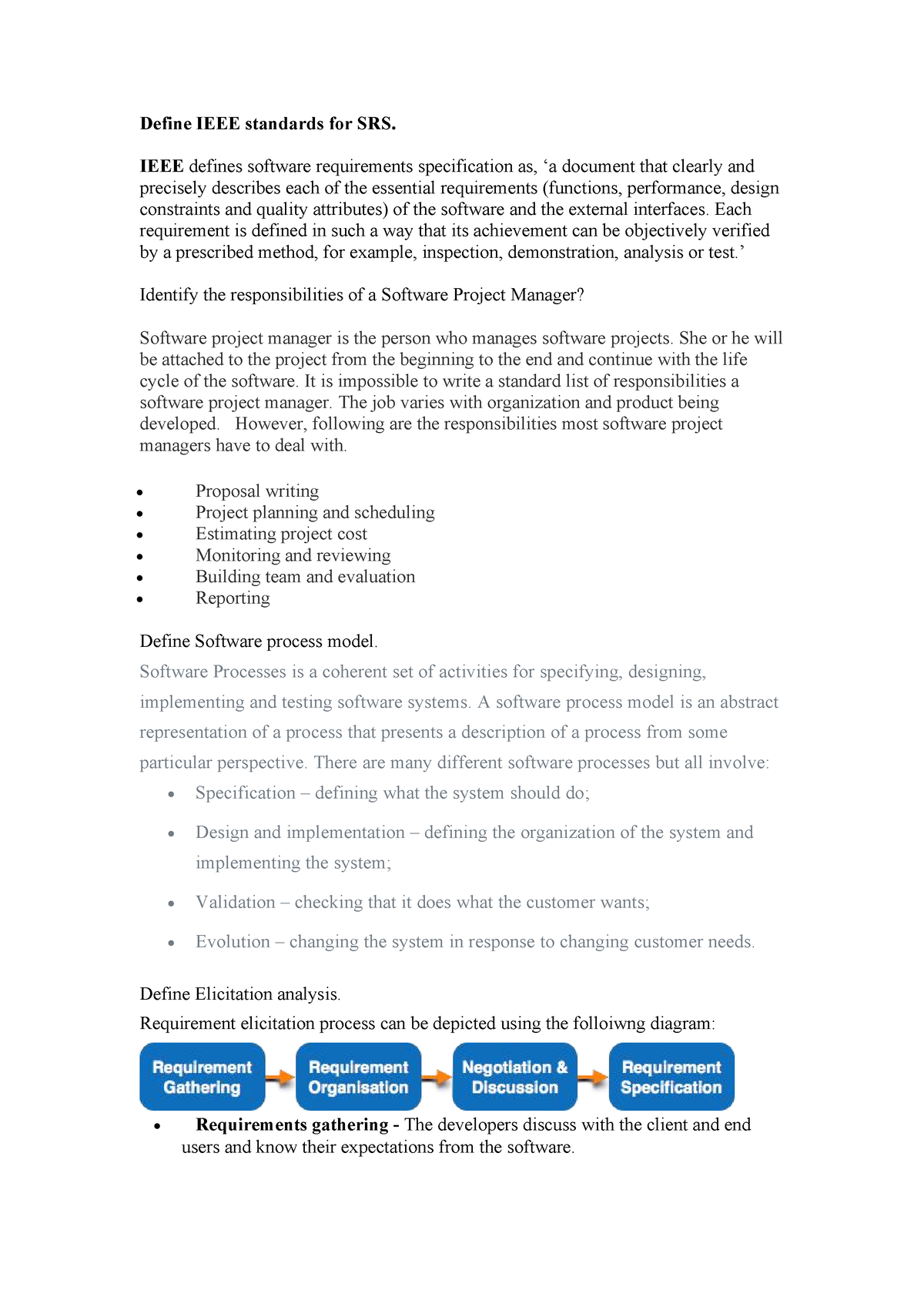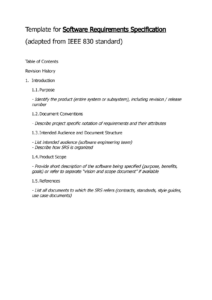IEEE, the Institute of Electrical and Electronics Engineers, offers a widely accepted and comprehensive template for documenting system requirements. This template guides users through a structured process to capture, analyze, and specify the functional and non-functional requirements of a system.
Using an “IEEE template for system requirement specification documents” ensures consistency and completeness in documenting requirements. It provides a common framework for stakeholders, analysts, and developers to work together effectively, reducing the risk of misunderstandings and errors.

Understanding the IEEE SRS Template
The IEEE template is a comprehensive document that covers various aspects of system requirements specification. It includes sections for:
- Introduction: Purpose, scope, and context of the document
- Overall description: High-level overview of the system and its functions
- Specific requirements: Detailed description of the functional and non-functional requirements
- System models: Diagrams, tables, and other artifacts to illustrate the system’s structure and behavior
- Appendices: Supporting information, such as glossary, references, and traceability matrix
The template provides a structured approach to capturing requirements at different levels of detail, from high-level system goals to detailed technical specifications. It emphasizes traceability, ensuring that requirements can be traced back to their sources and forward to their implementation.
Benefits of Using the IEEE SRS Template
Adopting the IEEE template offers numerous benefits for documenting system requirements. These include:
- Consistency: Ensures a uniform and structured approach to requirement specification
- Completeness: Guides the user through a comprehensive process to capture all relevant requirements
- Clarity: Provides a clear and concise structure for expressing requirements
- Traceability: Enables easy tracking and verification of requirements throughout the development process
- Communication: Facilitates effective communication and understanding among stakeholders
The IEEE template is particularly valuable for complex systems where multiple stakeholders and requirements must be managed. It helps ensure that the system meets the needs of its users and that there is a solid foundation for implementation and testing.
Conclusion
The “IEEE template for system requirement specification documents” is an essential tool for documenting system requirements effectively. It provides a comprehensive framework that guides the process of capturing, analyzing, and specifying requirements. By using the template, organizations can improve the quality of their requirements specifications, reduce errors, and enhance communication among stakeholders.
Adopting the IEEE template is a best practice for system development, ensuring that the system meets its intended purpose and that all relevant requirements are addressed. The structured approach and traceability features of the template make it an invaluable asset for managing system requirements complexity and delivering successful projects.

